I enjoy writing these articles for my readers, you guys. I don't accept payment for writing reviews, my opinion on products is my own, but if you find my recommendations helpful and you end up buying something through one of the links I may be able to receive a commission on that. More information
When you do a workout, you always want to move forward. Improve your fitness, increase your stamina.
To know how far you can go, it is important to check whether your heart rate is still at the right level between each session.
What are the best sports watches to use during your training sessions?
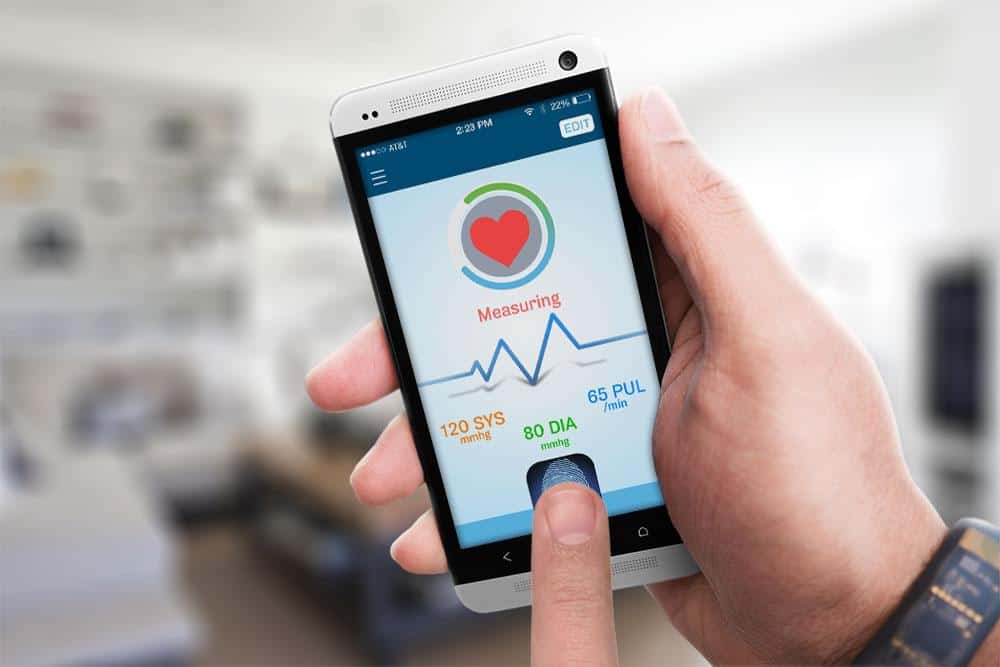
I've compared the best in multiple categories here:
| Sports watch | Images |
|---|---|
| Best heart rate measurement on your arm: Polar OH1 | 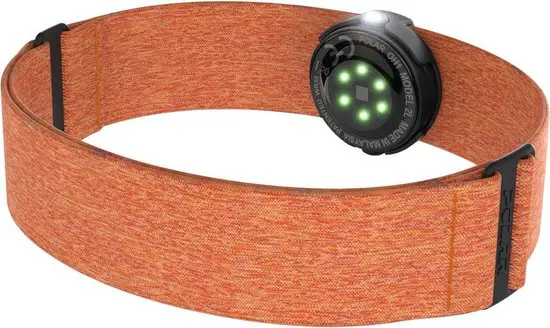
|
| Best heart rate measurement on your wrist: Garmin Forerunner 245 | 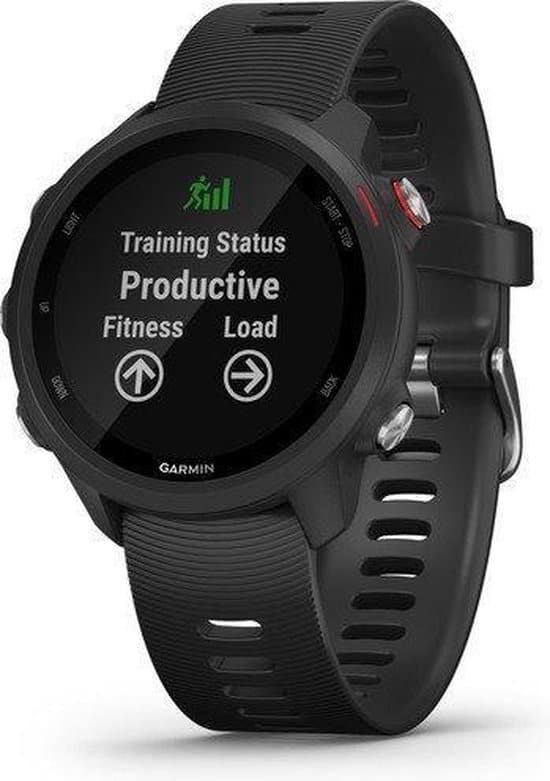
|
| Best middle class: polar M430 | 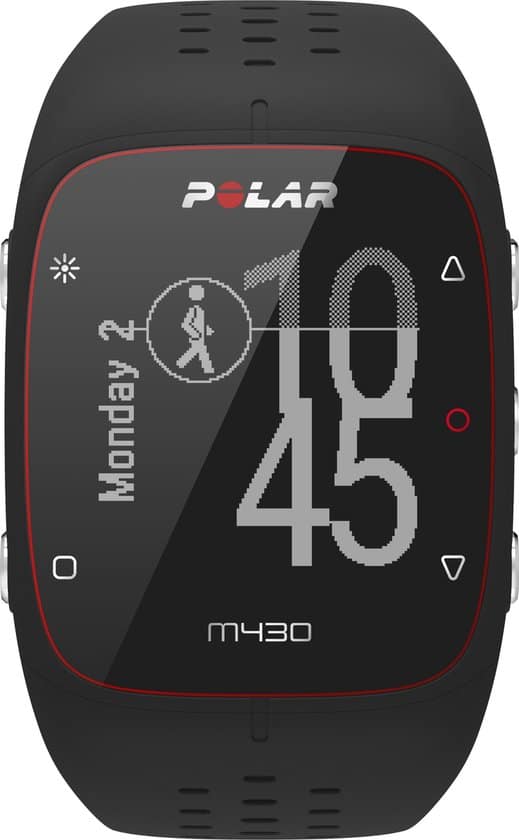
|
| Best smartwatch with heart rate function: Garmin Phoenix 5X | 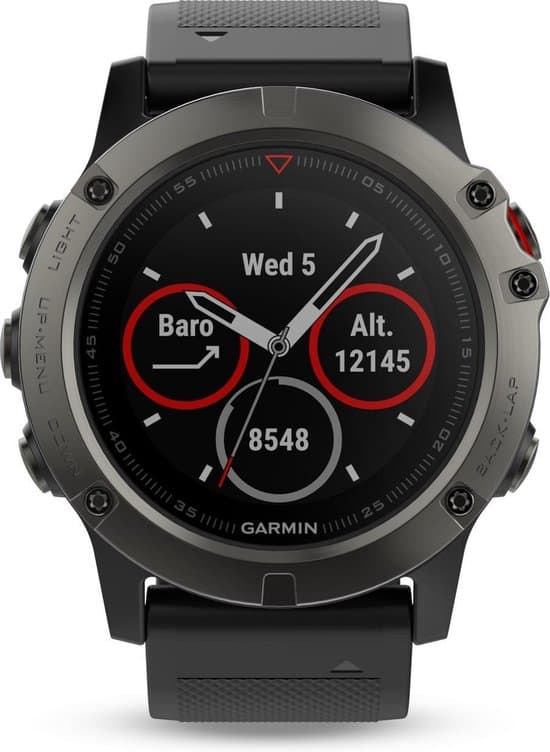
|
What we discuss in this comprehensive post:
Best sports watches with heart rate function reviewed
Here I will discuss both further so that you can make your choice which is best for your personal training situation.
Polar OH1 review
The best heart rate measurement by mounting on your lower or upper arm and not on your wrist. Fewer features than a watch but excellent for measurements.

The benefits in a nutshell
- Handy and comfortable
- Bluetooth pairing with various apps and wearables
- Accurate measurements
Then briefly the disadvantages
- Requires in-app purchases in the Polar Beat app
- No ANT +
What is the Polar OH1?
Here's a video about the Polar OH1:
When it comes to the most accurate heart rate measurement, a chest-mounted device is still the best method.
This is just not very practical during training sessions. However, optical heart rate monitors worn on the wrist often have difficulty tracking with many and fast movements.
While the Polar OH1 doesn't quite match a chest-worn monitor, this optical heart rate monitor is worn on the lower or upper arm.
In this way, it is much less prone to movement during fast exercises, and therefore ideal for taking many and fast sprints, such as when training for field sports.
At the same time, it is more pleasant and comfortable to wear than a wristwatch. A great compromise if you don't need absolute accuracy and responsiveness during high-intensity training, such as interval training.
Polar OH1 – Design
The problem with wrist-based optical heart rate monitors, as you see on most smartwatches or fitness trackers, is that they often move back and forth, especially during exercise.
This while contact with your skin is required to make the readings using optical light.
So if it's constantly sliding your wrist up and down during movements like running and sprinting, it's going to affect your ability to take accurate readings.
The Polar OH1 gets around this by being worn higher on your arm. This can be around your forearm or around your upper arm, near your biceps.
The small sensor is held in place by an adjustable elastic strap that ensures it stays in place for constant readings.
There are six LEDs to take heart rate readings.
Polar OH1 – Apps and pairing
Polar OH1 connects via Bluetooth, allowing you to pair it with your smartphone to be used with Polar's own Polar Beat app or in a number of other training apps.
This means you can use it with Strava or other running apps to track heart rate data.
The Polar Beat app offers a number of useful features, with many sports and workouts you can record. Where applicable, the app uses your phone's GPS functionality to indicate routes and pace, in addition to heart rate data from the OH1.
There is also voice guidance available and the possibility to set your goals for a workout.
A frustration, however, is that many of the fitness tests and extra functions are behind in-app purchases that you suddenly have to pay extra for.
Unlocking all costs only about $10, but I still feel like these should be bundled with the OH1.
The Polar OH1 also pairs with other wearables like the Apple Watch Series 3 via Bluetooth – which may seem like an odd choice considering the Apple Watch has its own monitor.
But as I mentioned before, wearing a fitness tracker on your wrist can be a problem if, like me, you do a lot of sprints and this monitor next to your apple watch can offer a solution.
Note that the OH1 supports Bluetooth but not ANT+, so it won't pair with wearables that only support the latter.
Polar OH1 can also store 200 hours of heart rate data instantly, so you can train without a paired device and still sync your heart rate data afterwards.
For example, if you leave your watch in the locker room during your field training.
Polar OH1 – Heart Rate Measurements
I wore the OH1 for a multitude of workout regimens, using different app configurations:
- Strava
- polarbeat
- Apple Watch Workout app
Across the different exercises, I found the measurements to be consistently accurate. For consistency, it really helps that the OH1 isn't prone to moving. The explosive sprints remained well registered.
In this regard, I was pleased that the Polar OH1's heart rate measurement was quickly revamped to reflect this effort.
The Garmin Vivosport I also had on my wrist took a few seconds to take note of that increased effort.
I also eventually started using the OH1 to record my recovery periods in between, with my heart rate telling me when I'm ready to hit my stride again. Its strength really lies in its versatility and application in various field sports.
Polar OH1 – Battery life and charging
You can expect about 12 hours of battery life from a single charge, which should last you a week or two of training sessions. To charge, you need to remove the sensor from the holder and into a USB charging station.
Why should you buy the Polar OH1?
If you feel that optical heart rate monitors on your wrist are not accurate enough, the Polar OH1 is an excellent solution.
The form factor is much more convenient and comfortable, and the accuracy is significantly improved over what you see from a device worn on your wrist.
Despite the in-app purchases, the Polar Beat app's price is reasonable. Polar OH1's innovative form factor and wearing method make it super comfortable and easy.
At bol.com, a lot of customers have also given a review. look at the reviews here
Garmin Forerunner 245 review
A bit older watch but full of excellent features. You certainly don't need more for field training, but it does offer you extra smartwatch features that you don't have with the Polar. The heart rate monitor is slightly less due to the wrist attachment

The Garmin Forerunner 245 still stands out despite its age. Meanwhile, the price has already dropped considerably, so you have an excellent watch at a lower price, but the depth and breadth of its tracking skills and training insights mean it can still compete with newer tracking watches.
The benefits in a nutshell
- Excellent heart rate insights
- Sharp looks, lightweight design
- Good value for money
Then briefly the disadvantages
- Occasional sync issues
- A bit plasticy
- Sleep tracking doesn't always work well (but you probably don't use it for your field workouts)
Today, we expect sports watches to be more than distance and pace trackers. Increasingly, we want them to coach us too, with insights on how to improve form and train smarter.
In any case, we want a heart rate monitor for our training exercises to see how quickly we can repeat exercises.
That's why the latest devices offer increasingly detailed running dynamics, heart rate analysis and training feedback.
That's why you would also think that a watch launched more than two years ago would struggle to keep up.
With future-proof technology at launch and subsequent updates, the Garmin Forerunner 245 does just that. Despite its age, it is still a good choice for your workout.
Let's be honest, there are more feature-rich watches at the moment, the Garmin Forerunner 645 for example, but if you mainly use it for your training schedule, you don't need many features at all.
And then it is nice to be able to fall back on an advantageous price.
Design, comfort and usability of the Garmin Forerunner
- Sharp color screen
- Comfortable silicone strap
- Heart rate sensor
Sports watches are rarely stylish and while the Forerunner 245 is still undeniably a Garmin, it's one of the nicest heart rate monitors money can buy.
It is available in three color combinations: black and frost blue, black and red, and black and gray (see photos here).
There's a classic 1,2-inch diameter color screen with a round front that's bright and easy to read in most lighting conditions, with enough room to display up to four stats on two customizable screens.
If you're a fan of touchscreens then the lack of them might disappoint you, instead you get five side buttons to navigate your way through Garmin's relatively simple menus.
The perforated soft silicone band makes for a more comfortable, less sweaty workout, especially useful for those long sessions, and given that you need to wear this a little tighter on the wrist to get the best accuracy from the built-in optical heart rate sensor, this is definitely not the case. luxury.
That said, comfort is somehow compromised, thanks to the Forerunner 245's sensor sticking out more than you'll find on the Polar M430, for example.
The buttons are responsive and easy enough to use on the go and the whole thing weighs just 42 grams, making it one of the lighter watches you can get, although some people may not like the overall plastic feel.
Heart rate tracking from the Garmin Forerunner 245
The Garmin Forerunner 245 tracks heart rate (HR) from the wrist, but you can also pair ANT + chest straps if you prefer the accuracy this provides (not the Polar OH1).
It was one of the earlier devices to eschew the Mio optical heart rate sensors in favor of the Garmin Elevate sensor technology.
The continuous 24/7 heart rate tracking on the Forerunner 245 is some of the best I've seen for monitoring your progress and spotting things like potential overtraining and an incoming cold.
With the push of a button you get insight into your current heart rate, highs and lows, your average RHR and a visual representation of the last 4 hours. You can then tap a graph of your RHR for the past seven days.
Is your resting heart rate high this morning? That's a sign that you might want to skip a training session or cut the intensity, and the Forerunner 245 makes that a much easier decision.
Indoor runs are measured by the built-in accelerometer while GLONASS and GPS provide the usual outdoor pace, distance and speed stats.
Outside we got a constant quick GPS fix, but when it came to accuracy there were some question marks.
The distances were not tracked 100% correctly during my use, but close enough if you don't plan to run a marathon.
In addition to distance, time, pace and calories, you can also see cadence, heart rate and heart rate zones while running, and there are customizable audio and vibration alerts to help you get to your desired pace and heart rate.
You can also store up to 200 hours of activity on the watch itself here, giving you plenty of space to sync with your phone app later.
The Forerunner 245 isn't just a running watch, it's also a comprehensive activity tracker that learns your daily patterns and automatically determines your step goals to aim for.
This way you can also achieve your goals outside of your training sessions to exercise more.
After your workout, you get what Garmin calls the “Training Effort,” a heart rate-based assessment of the overall impact of your training on your development. Scored on a scale of 0-5, it is designed to tell you whether this session had an improving effect on your fitness.
So if you want to take your game to the next level, this is one very handy feature.
Then there's the Recovery Advisor that tells you how long it will take to recover from your most recent effort. There's also a Race Predictor feature that uses all your data to estimate how fast you can run a 5k, 10k, half and full marathon.
Garmin Connect and Connect IQ
Auto sync is great...when it works. Packed with features, but that seem to make it extra complicated.
Some people love Garmin Connect and hate Polar Flow, others take the opposite view.
There are some really nice touches, like the fact that if you're already a Garmin user, Connect will automatically update your personal information for your new watch so you don't have to re-enter your height, weight and everything else.
I really liked that you can create a training calendar and sync it with the Forerunner 245, so you can see from your watch what your session is for the day, even down to the duration of your warm-up.
Automatic synchronization of smartphones via Bluetooth is a fantastic time saver when it works. However, I found that was not always the case and often had to re-pair my Forerunner 245 to the phone.
Garmin's 'app platform' Connect IQ also gives you access to a host of downloadable watch faces, data fields, widgets and apps, allowing you to further customize your 245 to suit your needs.
The Smartwatch Features
- Enables notifications and music controls
- Shows entire posts, not just subject lines
To further enhance its all-round performance, the Forerunner 245 offers a range of smart smartwatch features, including smart notifications for calls, emails, messages and social media updates, plus Spotify and music player controls.
It's an added bonus that you can read your posts instead of just getting the subject line and also that you can easily set up Do Not Disturb to eliminate distractions during your workout.
Battery life and charging
Enough battery to last an average week, but its own charger is an annoyance. When it comes to endurance, Garmin claims the Forerunner 245 can run for up to 9 days in watch mode and up to 11 hours in GPS mode with the heart rate monitor in use.
In any case, it is more than capable of handling an average week of training.
What else should you know about the Garmin Forerunner 245
There's a stopwatch, alarm clock, automatic daylight saving updates, calendar sync, weather information and a handy little Find My Phone feature, although Find My Watch might be more useful.
The Garmin Forerunner 245 provides enough training insights to make running and most field workouts more enjoyable. It's probably a tool for those who take performance at least semi-seriously more than casual outfielders.
This one has no less than 94 reviews on bol.com that you read here.
Other competitors
Not quite sure about the Garmin Forerunner 245 or the Polar OH1? These are the competitors with also good heart rate monitors.
Best Mid-Range: Polar M430

The Polar M430 is an upgrade over the best-selling M400 and looks almost identical until you flip it over to find a built-in heart rate sensor.
It's also a good upgrade, with all the features that made the M400 so popular, but also some extra intelligence.
In addition to solid wrist heart rate tracking, there's better GPS, improved sleep tracking, and smart notifications. It's ultimately one of the best mid-range running watches you can buy right now.
It's also more future-proof than the Forerunner 245, which is a bit older and might be a better partner for when you just want to keep track of your training sessions.
You can still get it here view and compare.
Best smartwatch with heart rate function: Garmin Fenix 5X
The top model for both multisport and hiking that can do almost anything.

The Garmin Fenix 5X Plus represents pretty much everything Garmin can squeeze into a watch. But while the X model of the Fenix 5 series offered new features, the differences are less obvious in the 5 Plus series.
All three watches in the series (Fenix 5 / 5S / 5X Plus) have support for maps and navigation (previously only available in the Fenix 5X), music playback (local or via Spotify), mobile payments with Garmin Pay, integrated golf courses and improved battery life.
This time, the technical differences in the specification are limited to the high altitude acclimation values (yes, the differences really are that small).
Instead, the Plus series revolves around different sizes for different users.
A bigger size gives better battery life and the 5X Plus is clearly the best (and much better than its already very persistent predecessor).
Extra everything plus
Here you have everything built in. Maps for easier navigation (screen is very small) and all the hiking, fishing and wilderness tools you can imagine (the Fenix series started out as a wilderness watch rather than a multisport watch).
Music playback on Bluetooth headphones is built in and the watch now also supports Spotify's offline playlists, with everything working surprisingly smoothly.
Garmin Pay works really well and the support for different cards and payment methods is starting to get really good.
And of course, it includes a range of exercise modes, schedules, internal and external sensors, measurement points, and endless data for all types of workouts.
Should anything be missing, Garmin's app store really starts to fill up with practice modes, watch faces, and dedicated practice fields.
It also has a solid package of activity tracker features and a hugely stable connection to your phone for notifications and exercise analysis.
Substantial yet neat
In fact, there are more features than most people really need, but they are there and just the touch of a button away.
The main sour note with all of these features is that notifications from your mobile are still a bit limited, but now at least there's the option to send pre-compiled SMS replies.
Everything is squeezed into one of Garmin's larger watches with a circumference of 51mm (the smaller models are 42 and 47mm respectively).
That's quite big, but at the same time it's well designed and paradoxically feels neat. We rarely experience the size of the watch as an issue, which is a positive.
If you want the best battery life
Trying to describe everything the Garmin Fenix 5X Plus offers would take a lot more space than here. But if you want a watch for all kinds of exercises that can also provide the most important functions of a smartwatch, it's hard to go wrong here.
If it feels too big, you can also choose one of the smaller system models without losing any features.
Check the most current prices and availability here
Conclusion
These are my current picks for tracking your heart rate during exhausting training sessions. Hopefully it will help you and you can make a good choice yourself.
Also read my article about it the best sports watches as smartwatch

